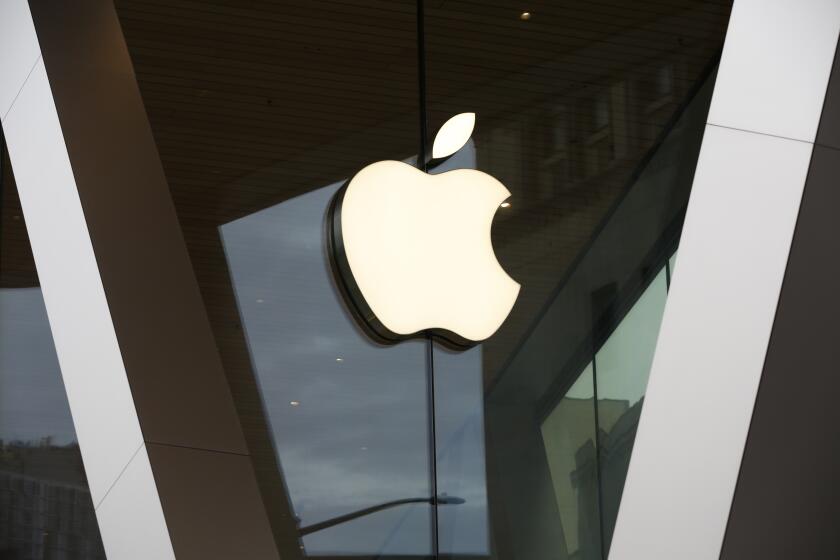Fed expects to keep interest rates near zero
- Share via
Reporting from Washington — The Federal Reserve said it is likely to leave short-term interest rates at rock-bottom levels at least through late 2014, giving businesses and consumers much more time to borrow money cheaply and bolster a slowly recovering economy.
The central bank’s announcement reflected its new, more subdued outlook for the U.S. economy. The downgraded projections tempered the increasing optimism of recent weeks as the job market and manufacturing performed better than expected.
Still, Wednesday’s statement that the Fed’s low-interest-rate policy would be extended about 18 months longer than previously planned sparked a mild rally on Wall Street and sent bond yields lower.
An interest-rate forecast was included in the central bank’s economic projections for the first time. Officials hope that the description of members’ views on rates will reassure markets that its easy-money policy will continue.
That, in turn, could result in further declines in long-term interest rates and encourage more businesses and individuals to borrow and invest.
Fed Chairman Ben S. Bernanke acknowledged that there has been “more encouraging news” about the economy lately. But citing continued uncertainties, especially on consumer spending in the U.S. and debt troubles in Europe, he said: “I don’t think we’re ready to declare that we’ve entered a new, stronger phase” of economic growth.
What’s more, despite the steady drop in the nation’s unemployment rate, to 8.5% last month from 9.1% in August, most Fed officials see the jobless figure showing little, if any, further improvement by the end of this year.
And unemployment is expected to be at an uncomfortably high 6.7% to 7.6% at the end of 2014, compared with 5% at the start of the recession in late 2007.
“There’s an awful long way to go” before the economy fully recovers from the deep recession, said Paul Ashworth, chief U.S. economist at Capital Economics, an economic research and forecasting firm.
The Fed’s interest-rate forecast is the latest in a series of moves under Bernanke to increase transparency and communication with the public. The new strategy also is aimed at giving the Fed additional firepower to boost the economy.
Over the last several years, the Fed has taken a number of controversial steps to support the nascent recovery, including buying massive amounts of Treasury bonds to lower mortgage and other long-term rates. The central bank has kept its benchmark short-term interest rate, called the federal funds rate, near zero since December 2008.
Since August, the Fed had said it was likely to keep the federal funds rate, which broadly influences rates on loans for businesses and consumers, at near zero “at least through mid-2013.” Financial markets most recently have been betting that the shift won’t happen until early 2014.
The Fed’s forecast showed a wide range of views among the top policymakers. Of the 17 committee members, 11 wanted the Fed to begin raising interest rates in 2014 or later, with two saying 2016 would be the right time to lift rates. But six preferred a shift earlier than 2014, with three committee members saying this year would be appropriate to start tightening.
This divergence “should dampen fears that the release of the Fed’s interest rate forecast is the same as a promise on rates,” said Diane Swonk, chief economist at financial services firm Mesirow Financial in Chicago.
Bernanke himself acknowledged that the Fed has limited ability to forecast several years out. And he noted that the statement to keep rates near zero through the end of 2014 shouldn’t be seen as an ironclad commitment, as changes in economic conditions and outlook could alter monetary policy moves.
Nor does Bernanke see the expanded forecasts as giving a huge stimulus to the economy.
“I wouldn’t overstate the Fed’s ability to massively change expectations through its statements,” he said.
He left open the possibility of the Fed undertaking another round of bond purchases, a move some analysts see happening as early as this spring.
On the economy, most Fed policymakers predicted that growth this year would come in at 2.2% to 2.7%, compared with a range of 2.5% to 2.9% forecast in November. The latest figures are more closely in line with many private forecasts.
Inflation, meanwhile, is projected to stay at a subdued 2% or lower. And the Fed, for the first time, made clear in a statement that it viewed a 2% inflation rate over the long haul as an optimal target in promoting its dual goal of fostering price stability and promoting maximum employment.
Dean Croushore, a former Fed economist and currently the chair of the economics department at the University of Richmond, said people shouldn’t count on the Fed’s interest-rate predictions to come true because such forecasts by economists overall have an extremely poor track record.
Rather, he regarded the Fed’s statement detailing its 2% inflation target as the most positive part of Wednesday’s actions.
“The Fed is committed to low inflation in the long run,” he said. “You should take comfort in that.”
More to Read
Inside the business of entertainment
The Wide Shot brings you news, analysis and insights on everything from streaming wars to production — and what it all means for the future.
You may occasionally receive promotional content from the Los Angeles Times.











